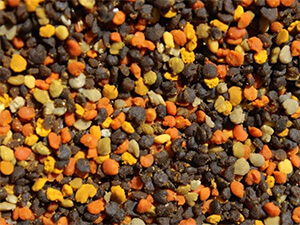
UNIVERSITY PARK, Pa. – The Penn State Honey and Pollen Diagnostic Lab now is accepting honey and pollen samples from researchers and beekeepers who would like to identify the plants at the genus level from which honey bees are collecting nectar and pollen.
“Bees and other pollinators, such as flies or butterflies, collect the nectar and pollen from flowers as their main source of food,” said Christina Grozinger, Publius Vergilius Maro Professor of Entomology and director of the Center for Pollinator Research at Penn State. “Honey bees will convert nectar to honey. So, if you are designing pollinator gardens or if you are a beekeeper and want to market specialty honey, knowing which plants the bees are foraging on is essential.”
Rather than directly tracking the flowers from which bees forage, which can be a difficult task because bees can travel miles search of flowers, the lab uses DNA metabarcoding to analyze samples of pollen or honey. This method allows for the identification of all plant genera that are present in a sample. Using this technique, the lab can process about 200 samples at a time.
“Metabarcoding involves concentrating and homogenizing the pollen, extracting DNA, performing PCR amplification to replicate and uniquely barcode the DNA target for identification, and finally analyzing the samples using next generation sequencing,” said Michele Mansfield, director of the Honey and Pollen Diagnostic Lab. “After sequencing, our data analysis platform creates reports for each sample, where each plant source is identified along with the proportion it contributes to the total floral resources in the sample.”
Beekeepers can submit samples of their honey, which contains trace amounts of pollen that is concentrated during processing, for analysis. Because nectar from different flower species has different concentrations of sugars and plant compounds, honey can vary in color, taste and medicinal properties depending on the flowers from which the bees foraged.
“There is tremendous interest for beekeepers to be able to identify and market ‘specialty honey’ that is made from specific plant species,” Grozinger said.
Pollen samples can be collected from colonies of honey bees, nests of wild bees, or bodies of insects captured in the field. Identifying the pollen can help researchers, beekeepers, gardeners and conservationists determine the flowers that are both most attractive to and nutritious for different pollinator species, said Grozinger. This information can then be used to design pollinator gardens and habitats that can support specific species of pollinators or a diverse community of pollinators.
For more information about honey and pollen diagnostic services, including spotted lanternfly identification in honey that will be available in 2024, visit the lab’s website. Please contact Michele Mansfield at man203@psu.edu with any questions or for additional sample submission information. More details about the Penn State Center for Pollinator Research can be found at pollinators.psu.edu.


